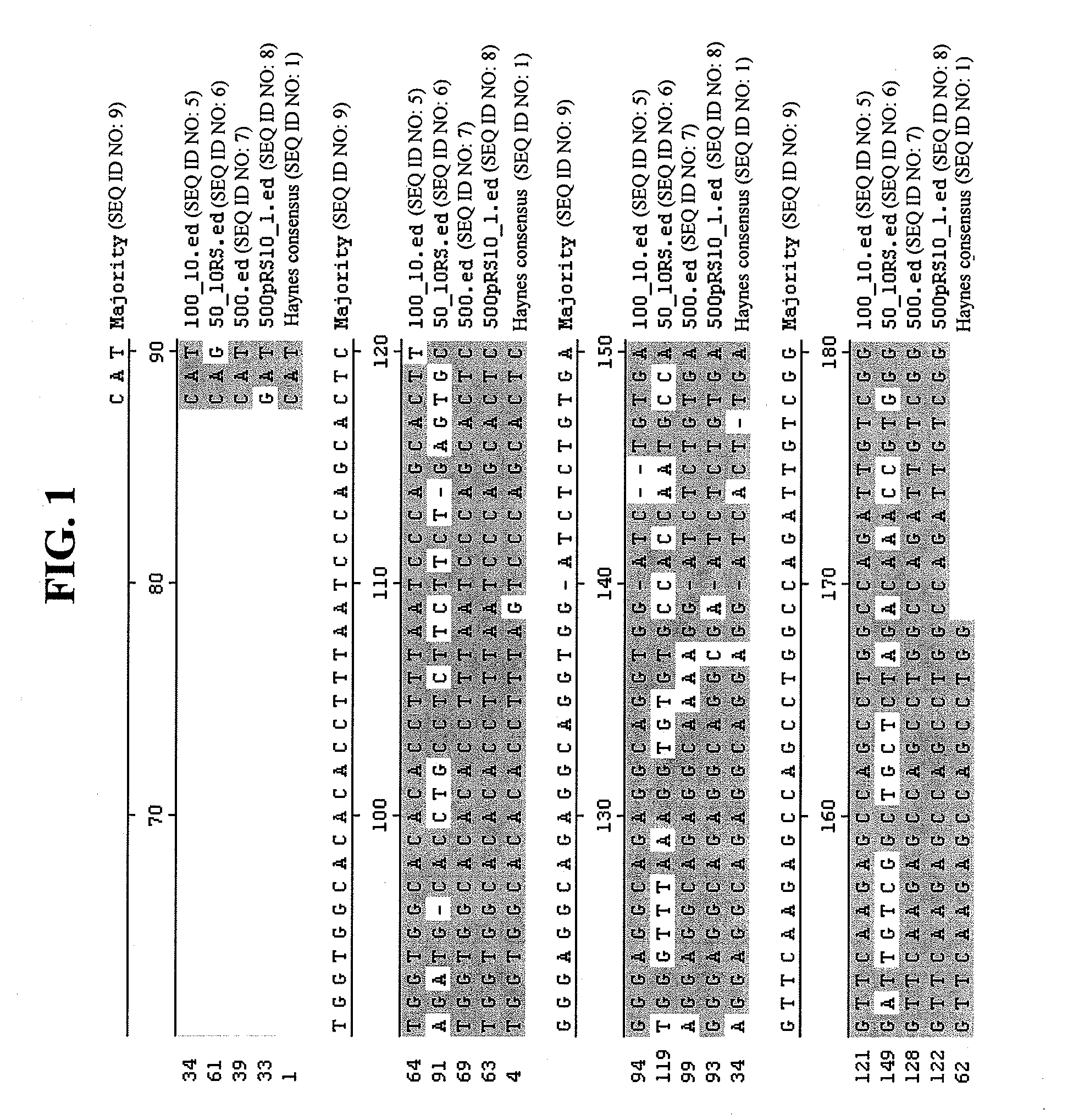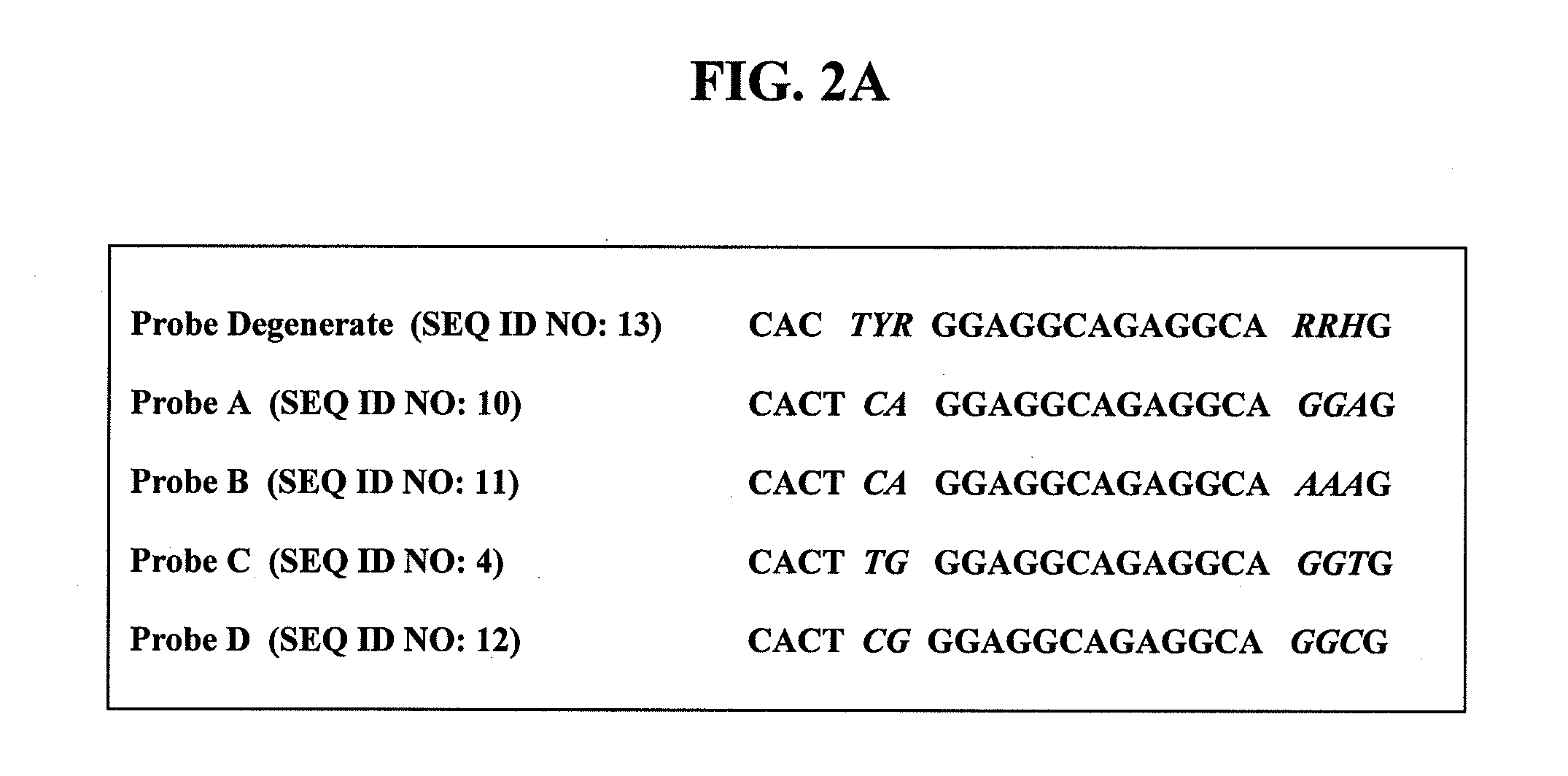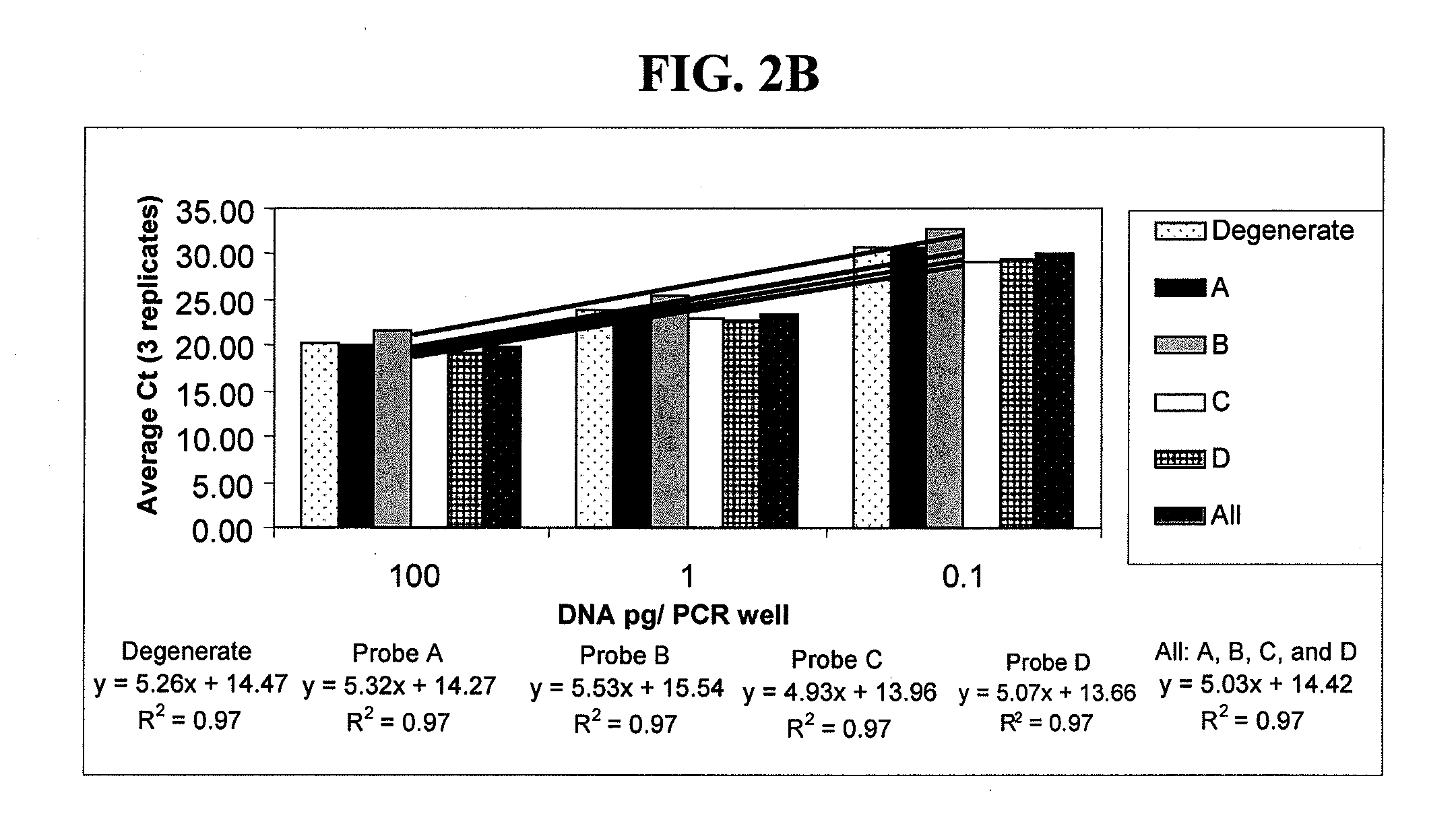METHODs OF DETECTION AND QUANTIFICATION OF HOST CELL DNA CONTAMINATION OF PURIFIED PROTEINS
a technology of purified proteins and host cells, applied in the field of nucleic acid contamination detection and quantification methods, can solve problems such as difficult detection of dna on the order of picograms
- Summary
- Abstract
- Description
- Claims
- Application Information
AI Technical Summary
Benefits of technology
Problems solved by technology
Method used
Image
Examples
example 1
Method Development and Optimization
Example 1.1
Materials and Methods
[0062]The probe and primers were obtained from Integrated DNA Technologies (Coralville, Iowa). ABI Prism 7000 TAQMAN® Instrument and software were obtained from Applied Biosystems (San Diego, Calif.). PCR reagents for qPCR were obtained from TAQMAN® PCR Core Reagent Kit (Applied Biosystems). Quantitative real time PCR reactions were run for 45 cycles in a two-step PCR reaction consisting of a melting step (denaturing step) at 95° C. for 15 minutes, followed by the annealing / extension step at 60° C. for 1 minute.
example 1.2
Determination of Alu-Equivalent Consensus Sequence
[0063]The target for the Chinese Hamster Ovary (CHO) cell DNA qPCR assay was the CHO Alu-equivalent consensus sequences described by Haynes et al., supra. Based on the 134 bp consensus sequence of six Alu-equivalent sequences cloned from CHO cells in Haynes et al., forward and reverse primers were designed. These were the same primers later utilized for the qPCR reaction (SEQ ID NO:2 and SEQ ID NO:3). PCR products with the expected size of 80 bp were generated using a high fidelity Taq Polymerase Pfu (Stratagene, La Jolla, Calif.). Ten PCR reactions were pooled after confirming the presence of a single band with the expected 80 bp size, and subcloned into a high copy E. coli vector using blunt end cloning kit (Invitrogen, Carlsbad, Calif.), transformed into ONE SHOT® chemically competent E. coli cells (Invitrogen) and plated on selective plates. Ten individual colonies were picked and the plasmids purified. Of these ten, five were se...
example 1.3
Probe Optimization
[0064]The consensus analysis of Alu-equivalent sequences yielded four nondegenerate probes: Probe A (SEQ ID NO:10), Probe B (SEQ ID NO:11), Probe C (SEQ ID NO:4), and Probe D (SEQ ID NO:12) (FIG. 2A). Based on the sequences of these nondegenerate probes, one degenerate probe was designed, Probe Deg. (SEQ ID NO:13) (FIG. 2A). The probes were designed using the ABI Primer Express Software, and contained a fluorescent reporter dye FAM and a fluorescent quencher, TAMRA.
[0065]The aim was to select a probe or a combination of probes that would yield high sensitivity, broad dynamic range, and high signal-to-background ratio. The performance of each of the four nondegenerate probes was compared to each other, to the degenerate probe, as well as to the mixture of 200 nM of each nondegenerate probes. A known concentration of template DNA was extracted from water using the Puregene DNA Purification Kit (Gentra, Minneapolis, Minn.; hereinafter “Gentra”), serially diluted, and ...
PUM
| Property | Measurement | Unit |
|---|---|---|
| Concentration | aaaaa | aaaaa |
| Therapeutic | aaaaa | aaaaa |
| Nucleic acid sequence | aaaaa | aaaaa |
Abstract
Description
Claims
Application Information
 Login to View More
Login to View More - R&D
- Intellectual Property
- Life Sciences
- Materials
- Tech Scout
- Unparalleled Data Quality
- Higher Quality Content
- 60% Fewer Hallucinations
Browse by: Latest US Patents, China's latest patents, Technical Efficacy Thesaurus, Application Domain, Technology Topic, Popular Technical Reports.
© 2025 PatSnap. All rights reserved.Legal|Privacy policy|Modern Slavery Act Transparency Statement|Sitemap|About US| Contact US: help@patsnap.com



